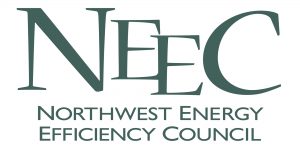2011 was a seminal year for BPA in its adoption of a tiered rate structure and foundational changes to its historic power supply role serving its utility customers. BPA adopted a Regional Dialogue Policy, which defined its potential resource acquisition obligations for power sales after 2011, whether at Tier 1 or Tier 2 rates. BPA continued to treat energy efficiency as a resource and define its goals in terms of megawatts of energy efficiency acquired. Two primary documents formed the foundation of the EE Post-2011 program:
- "Energy Efficiency Post-2011 Policy Framework": provides the high level policy framework, such as energy efficiency costs collected the in Tier 1 rate and the Energy Efficiency Incentive (EEI) funding mechanism with budgets allocated on a Tier 1 Cost Allocator basis.
- "Energy Efficiency Post-2011 Implementation Program": provides implementation specifics that nest within the larger policy framework, such as means for utilizing and transferring EEI funding, and paying performance payments on a cents per kilowatt-hour basis.
The "Energy Efficiency Post-2011 Review" (Post-2011 Review) is a public process to review and consider improvements to the BPA energy efficiency policy framework and associated implementation elements put in place on October 1, 2011. To facilitate a comprehensive and robust engagement with stakeholders, BPA has created a scoping document to capture those issues for review that are within scope for these public process.
More information is available at http://www.bpa.gov/Energy/N/post-2011/index.cfm.
